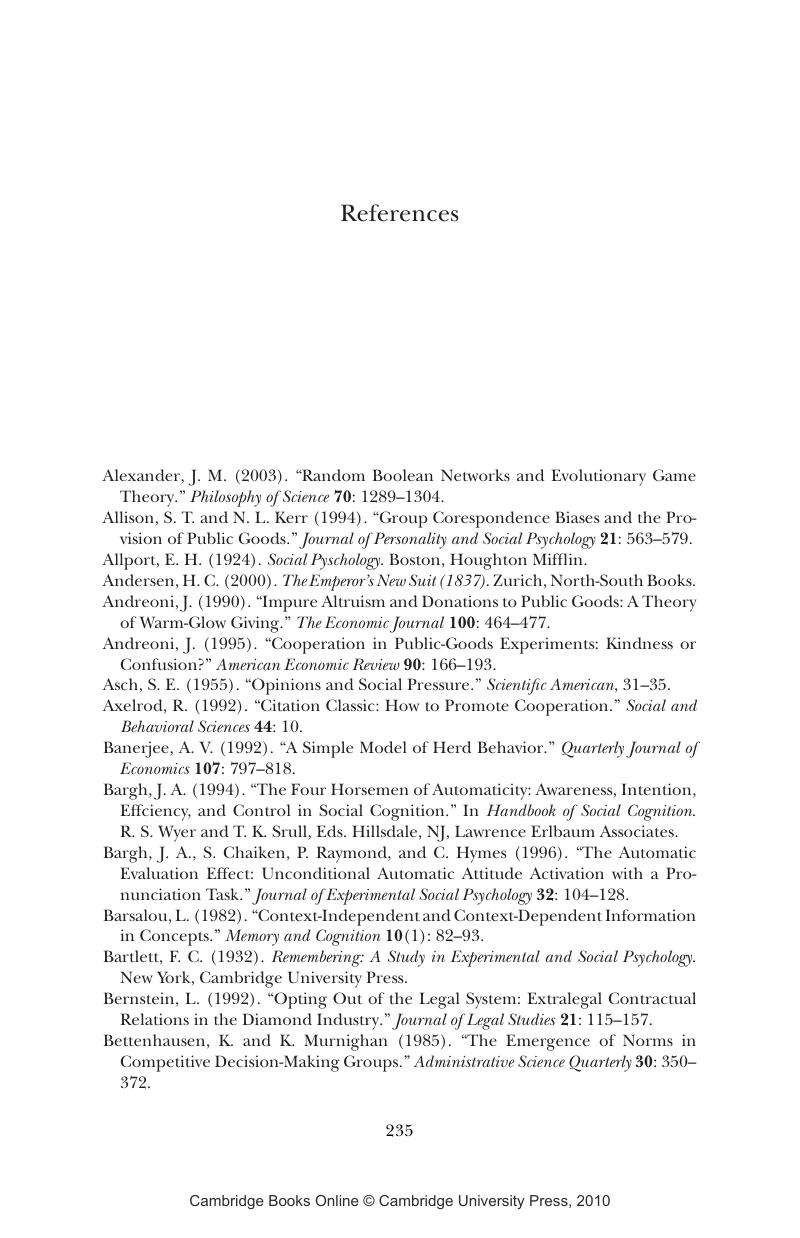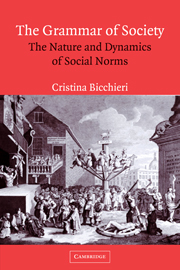References
Published online by Cambridge University Press: 05 June 2012
Summary

- Type
- Chapter
- Information
- The Grammar of SocietyThe Nature and Dynamics of Social Norms, pp. 235 - 244Publisher: Cambridge University PressPrint publication year: 2005



